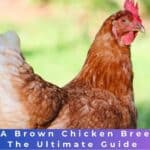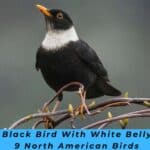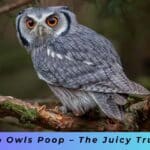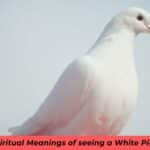Finches in Florida are a captivating sight for bird enthusiasts of all levels. Whether you’re an avid birder or just starting to explore the world of ornithology, Florida’s diverse ecosystem offers a treasure trove of avian wonders.
Among these, finches hold a special place, captivating observers with their vibrant colors and melodious songs. This guide will take you on a journey through the world of Florida finches, from the common residents to the rare visitors that make the Sunshine State their temporary home.
The variety of finches in Florida reflects the state’s rich biodiversity, making it a prime destination for those interested in these charming birds. From urban backyards to remote wilderness areas, finches in Florida can be found in a wide range of habitats, each species adapted to its unique niche within the ecosystem.
Introduction: Florida’s Feathered Jewels
Florida’s unique geography and varied habitats make it a paradise for bird enthusiasts. From the swamps of the Everglades to the sandy beaches of the Florida Keys, the state provides a rich tapestry of environments that attract a wide array of finches. These small, seed-eating songbirds are known for their conical beaks and often colorful plumage, making them a favorite among backyard birds and wilderness spotters alike.
“Florida’s finch diversity is a testament to the state’s ecological richness. Each species tells a story of adaptation and survival in this dynamic landscape.” – Dr. Avian Researcher, Florida Ornithological Society
Meet the 4 Resident Finches
House Finch: Florida’s Adaptable Songster

The House Finch (Haemorhous mexicanus) is one of Florida’s most common and adaptable finch species. Originally native to western North America, these birds have successfully colonized the eastern United States, including Florida.
Identification tips:
- Males: Rosy red head, breast, and rump
- Females: Grayish-brown with streaked underparts
- Both sexes: About 5-6 inches long with a notched tail
Habitat preferences: House Finches are incredibly adaptable and can be found in a variety of habitats, including:
- Urban and suburban areas
- Parks and gardens
- Forest edges
- Agricultural lands
Feeding habits and backyard attraction: To attract House Finches to your backyard, consider offering:
- Black oil sunflower seeds
- Nyjer seeds
- Fruit pieces (especially in summer)
| Food Type | Attractiveness to House Finches |
| Black oil sunflower seeds | High |
| Nyjer seeds | High |
| Safflower seeds | Medium |
| Fruit pieces | Medium (seasonal) |
| Millet | Low |
Check this out Why Don’t I Hear Mourning Doves Anymore? Reasons
American Goldfinch: The Winter Visitor
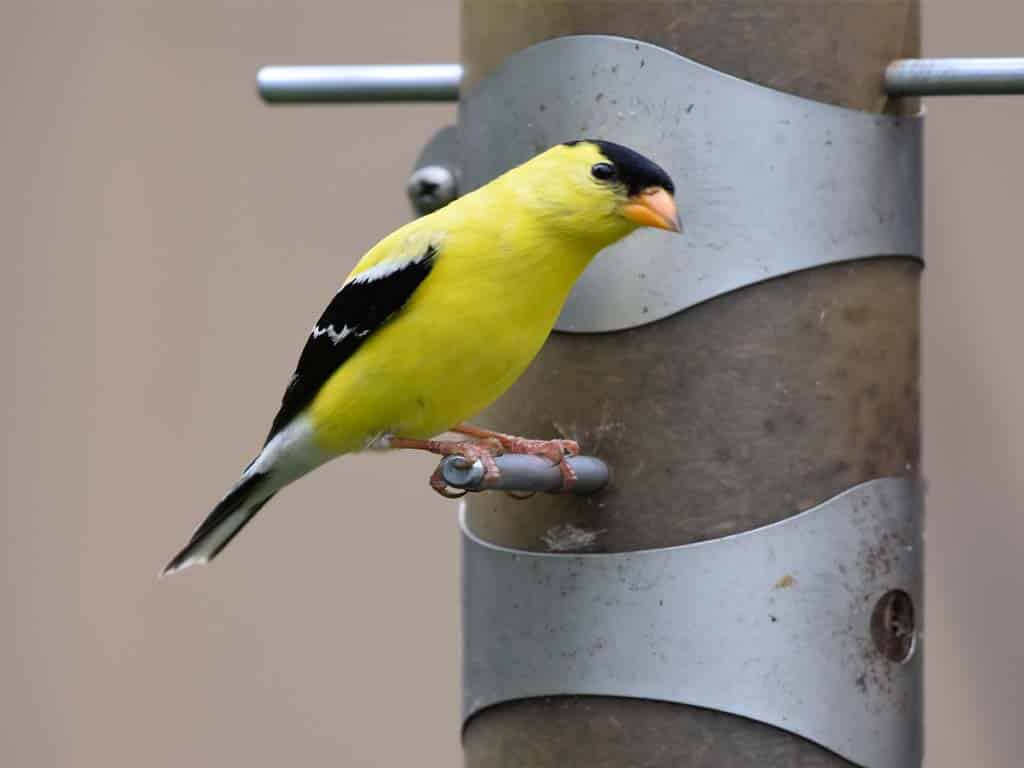
The American Goldfinch (Spinus tristis) is a beloved winter resident in Florida, bringing a splash of color to the cooler months.
Seasonal plumage changes:
- Breeding plumage (spring/summer): Males are bright yellow with black wings and cap
- Nonbreeding plumage (fall/winter): Both sexes are olive-brown with yellowish undertones
Migration patterns in Florida: American Goldfinches typically arrive in Florida in October and stay until April. They’re part of a group known as “winter residents,” birds that spend the colder months in the state but breed further north.
Favorite food sources:
- Thistle seeds (also known as Nyjer)
- Sunflower seeds
- Seeds from composite flowers like coneflowers and asters
Fun Fact: American Goldfinches are one of the strictest vegetarians in the bird world, eating only seeds and never insects!
Check this out Parrots in Florida – Complete Guide To Wild Parakeets In Florida
Rare but Regular: Florida’s Occasional Finch Visitors
Pine Siskin: The Tiny Nomad
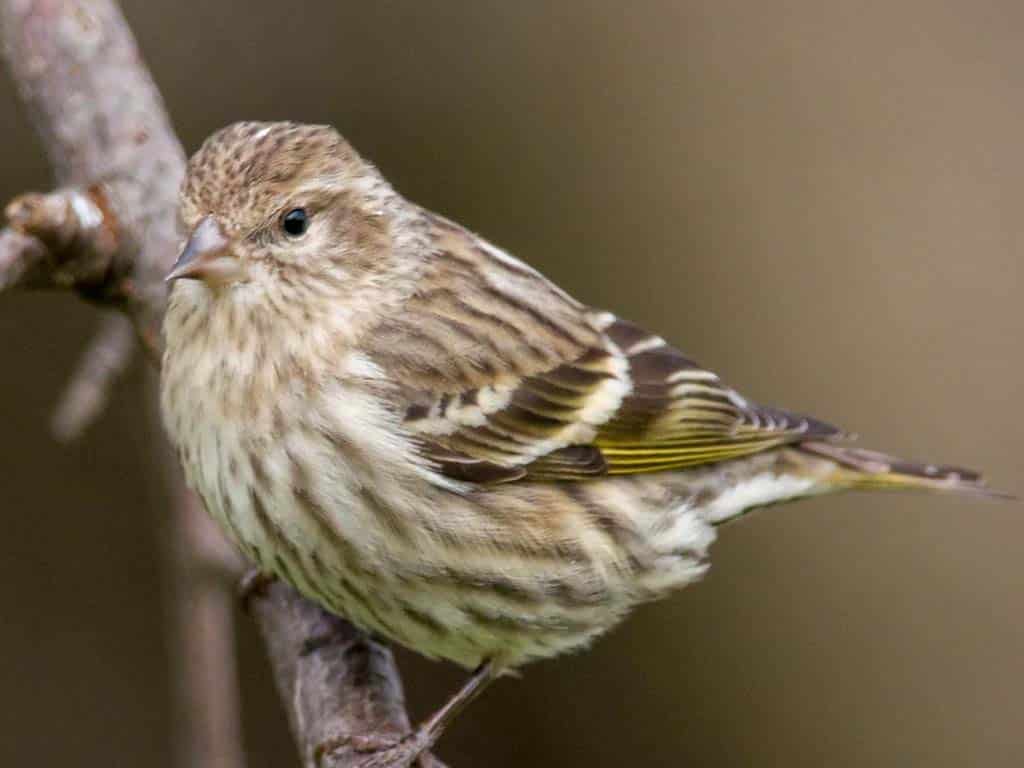
The Pine Siskin (Spinus pinus) is a small, streaky finch that occasionally graces Florida with its presence, especially during irruption years.
Irruption years: When and why they appear Irruptions occur when food sources in their normal range are scarce, usually due to poor seed crops in northern coniferous forests. During these years, large numbers of Pine Siskins may appear in Florida, typically between October and April.
How to spot them among other finches:
- Look for small, streaky brown birds with yellow edges on wings and tail
- Listen for their distinctive, rising “zreeeeeet” call
- Watch for their acrobatic feeding style at bird feeders
Check this out Why Do Hawks Screech? The Surprising Truth
Purple Finch: The Raspberry-Hued Rarity

The Purple Finch (Haemorhous purpureus) is an uncommon but regular winter visitor to northern Florida, particularly in the Panhandle region.
Distinguishing from House Finches:
- More robust build with a larger, curved culmen (upper ridge of the bill)
- Males have a deeper red coloration, often described as “raspberry”
- Females have more distinct facial markings than female House Finches
Best times and places for sightings:
- Late October through March
- Look in mixed woodlands, especially those with pine trees
- Check bird feeders in northern Florida during colder months
Check this out Are Penguins Friendly Or Are Penguins Dangerous?
Accidental Finches: Rare Florida Finch Sightings That Excite Birders
While rare, Florida occasionally hosts finch species that are well outside their normal range. These “accidental” visitors create excitement in the birding community and offer unique opportunities for observation.
Notable rare sightings and their stories:
- Evening Grosbeak: In December 2020, several Evening Grosbeaks were spotted in the Florida Panhandle, causing a stir among local birders.
- Lesser Goldfinch: Typically a western species, a Lesser Goldfinch was documented in the Florida Keys in 2018, marking only the second state record.
Factors contributing to accidental appearances:
- Extreme weather events pushing birds off course
- Changes in food availability in their normal range
- Occasional wandering behavior, especially in young birds
Finch Watching in Florida: Tips for Spotting Florida Finches
To maximize your chances of spotting Florida’s finches, consider these tips and locations:
Best birding locations for finch encounters:
- Tallahassee’s Alfred B. Maclay Gardens State Park
- Gainesville’s Paynes Prairie Preserve State Park
- Orlando Wetlands Park
- Everglades National Park
- Merritt Island National Wildlife Refuge
Seasonal guide: When to see which species
| Species | Best Time to See |
| House Finch | Year-round |
| American Goldfinch | October – April |
| Pine Siskin | November – March (irruption years) |
| Purple Finch | December – February (northern Florida) |
Creating a finch-friendly backyard:
- Plant native seed-bearing flowers like coneflowers and sunflowers
- Offer a variety of seeds in different feeder types
- Provide fresh water sources, such as birdbaths
- Maintain a pesticide-free garden to ensure a healthy ecosystem
Check this out Why Do Crows Chase Hawks? Do Crows Hate Hawks?
Conservation and Challenges: Protecting Florida’s Finch Populations
Florida’s finches face various challenges that impact their populations and habitats.
Habitat loss and its impact on Florida’s finches:
- Urban development reducing natural feeding and nesting areas
- Agricultural practices affecting seed availability
- Wetland drainage altering critical ecosystems
Climate change effects on migration patterns:
- Shifting temperatures affecting timing of migrations
- Changes in plant phenology impacting food availability
- Increased frequency of extreme weather events
How Floridians can help protect finch populations:
- Support local conservation efforts and wildlife refuges
- Participate in citizen science projects like the Great Backyard Bird Count
- Create wildlife-friendly spaces in your yard or community
- Advocate for policies that protect natural habitats and address climate change
Finch Photography: Capturing Florida Finches on Camera
For those looking to document their finch encounters, consider these tips:
Equipment recommendations:
- A camera with a fast shutter speed (at least 1/1000 sec)
- A telephoto lens (300mm or longer)
- A sturdy tripod or monopod for stability
Techniques for photographing these small, quick birds:
- Use burst mode to capture birds in flight
- Focus on the bird’s eye for the sharpest images
- Be patient and observe natural behaviors before shooting
- Consider setting up a photography blind near feeders
Florida Finch Folklore: Cultural Significance of Finches in the Sunshine State
Finches have woven themselves into the cultural fabric of Florida, appearing in various forms of art and storytelling.
Native American legends involving finches: The Seminole crew has a legend about a brave little finch that brought fire to the people, similar to the Greek myth of Prometheus.
Finches in Florida’s art and literature:
- John James Audubon’s detailed paintings of Florida’s birdlife, including finches
- Contemporary Florida artists like James Prosek featuring finches in their wildlife art
Citizen Science: Contributing to Florida Finch Research
Engage in finch conservation and research by participating in citizen science projects:
Participating in the Great Backyard Bird Count:
- Annual event held in February
- Count birds in your backyard or local area for as little as 15 minutes
- Submit observations online to contribute to global bird population data
Using eBird to report finch sightings in Florida:
- eBird is a real-time, online checklist program for the global birding community
- Report your finch sightings year-round
- Contribute to a massive database used by researchers and conservationists
“Citizen science projects like eBird have revolutionized our understanding of bird populations and movements. Every observation counts!” – eBird Project Leader
Conclusion: The Future of Finches in Florida
As we look to the future, the fate of Florida’s finches hangs in a delicate balance. Predicted population trends suggest challenges ahead, particularly for species affected by climate change and habitat loss. However, the role of bird enthusiasts in finch conservation cannot be overstated. By engaging in responsible birding, supporting conservation efforts, and contributing to citizen science, we can help ensure that future generations will continue to enjoy the delightful presence of finches in Florida’s diverse ecosystems.
Whether you’re a seasoned birder or a curious newcomer, Florida’s finches offer endless opportunities for discovery and appreciation. From the year-round charm of the House Finch to the winter splendor of the American Goldfinch, and the exciting possibility of spotting a rare visitor like the Pine Siskin or Purple Finch, the world of Florida’s finches is as diverse as it is captivating. So grab your binoculars, head outdoors, and immerse yourself in the wonderful world of Florida’s feathered friends!

James Oliver is an experienced blogger with a passion for exploring and documenting the fascinating world of birds. Through his insightful articles on Fowl Explorers, he shares his in-depth knowledge and enthusiasm for avian species, offering readers a unique perspective on birdwatching and wildlife conservation.


